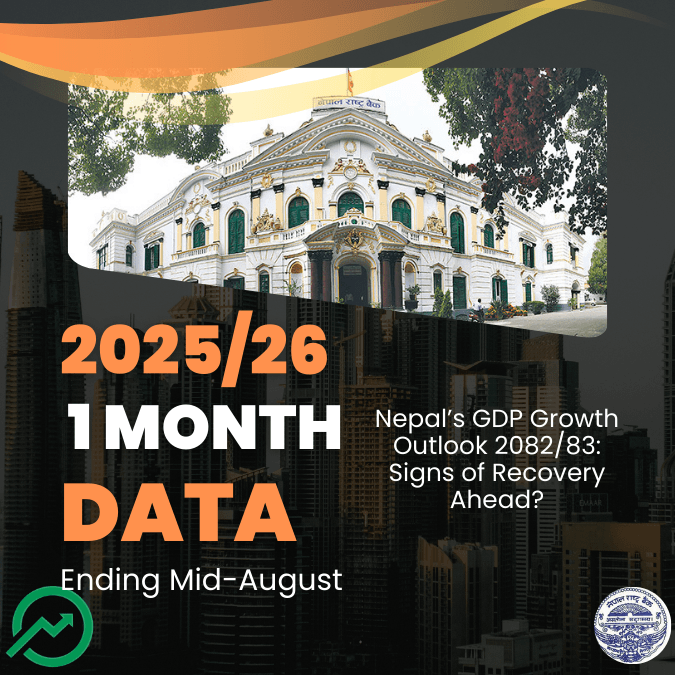By Sandeep Chaudhary
Nepal’s GDP Growth Outlook 2082/83: Signs of Recovery Ahead?

Nepal’s economic growth is showing signs of gradual recovery after years of subdued performance. According to the latest macroeconomic indicators, the real GDP at purchasers’ price is projected to grow by 4.6% in FY 2024/25, improving from 3.7% in FY 2023/24 and 2.0% in FY 2022/23. The economy is benefiting from a combination of moderating inflation, stable remittances, and improving external balances. Nominal GDP growth is expected at 7%, while Gross National Disposable Income (GNDI) remains strong at 7.4%, reflecting healthier household incomes supported by remittance inflows. However, investment momentum remains weak, with Gross Capital Formation declining to 28.1% of GDP from over 37% just three years earlier, raising concerns over long-term productive capacity.
On the price front, inflationary pressures have eased significantly. CPI inflation, which reached 8.08% in FY 2021/22, has fallen to just 2.20% in FY 2024/25, with mid-August 2025 data suggesting a further slowdown to 1.68%. Food prices, however, remain volatile and even recorded deflation at -1.19% in 2024/25, reflecting supply-side challenges. This disinflation has improved household purchasing power but also signals subdued domestic demand. Salary and wage growth has similarly slowed, reflecting tight labor market conditions and weak job creation.
The external sector presents the most encouraging outlook. After years of trade and current account deficits, Nepal recorded a current account surplus of Rs. 409 billion in FY 2024/25, largely supported by an 81.8% surge in exports, moderate import growth, and a continued rise in workers’ remittances to Rs. 1,723 billion. Consequently, the Balance of Payments posted a surplus of Rs. 594 billion, while foreign exchange reserves reached USD 19.5 billion, providing over a year of import cover. These improvements in external stability have boosted investor confidence and reduced vulnerability to external shocks.
The financial sector has also stabilized. Broad money (M2) grew steadily at around 12–14%, while private sector credit expanded moderately by 6–8%. Importantly, interest rates have eased significantly—base lending rates fell from over 10% in FY 2022/23 to just above 6% in FY 2024/25—making credit more affordable for businesses and households. Capital markets too have recovered, with the NEPSE index climbing to 2,794 points in FY 2024/25 and market capitalization expanding to 83.5% of GDP, indicating improving investor sentiment.
On the fiscal side, revenue growth rebounded to 10.5% in FY 2024/25 after a contraction in FY 2022/23, while expenditure growth remained contained. However, capital expenditure performance continues to lag, hovering at just 3.6% of GDP, undermining prospects for infrastructure-driven growth. Public debt remains sustainable, with domestic debt at 20.8% of GDP and external debt at 22.9%, giving some fiscal room for targeted investment in priority sectors.









